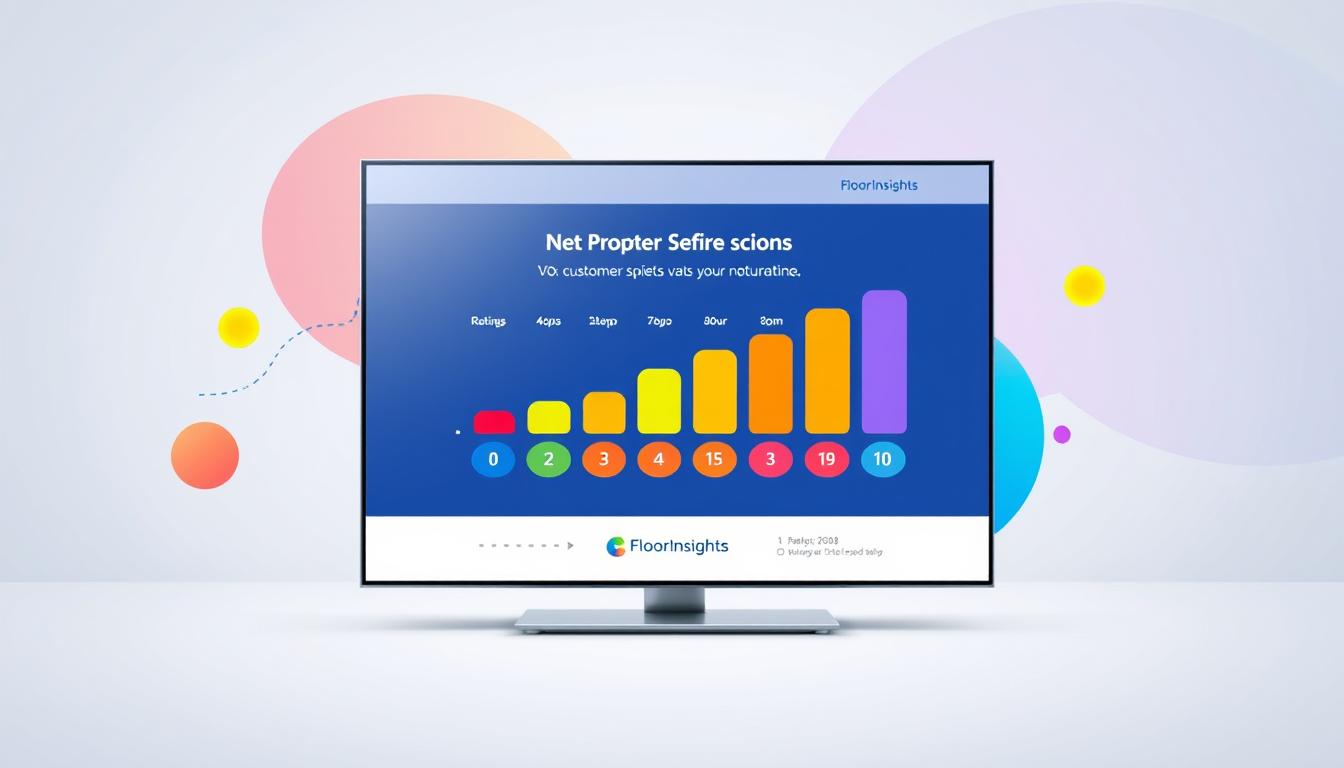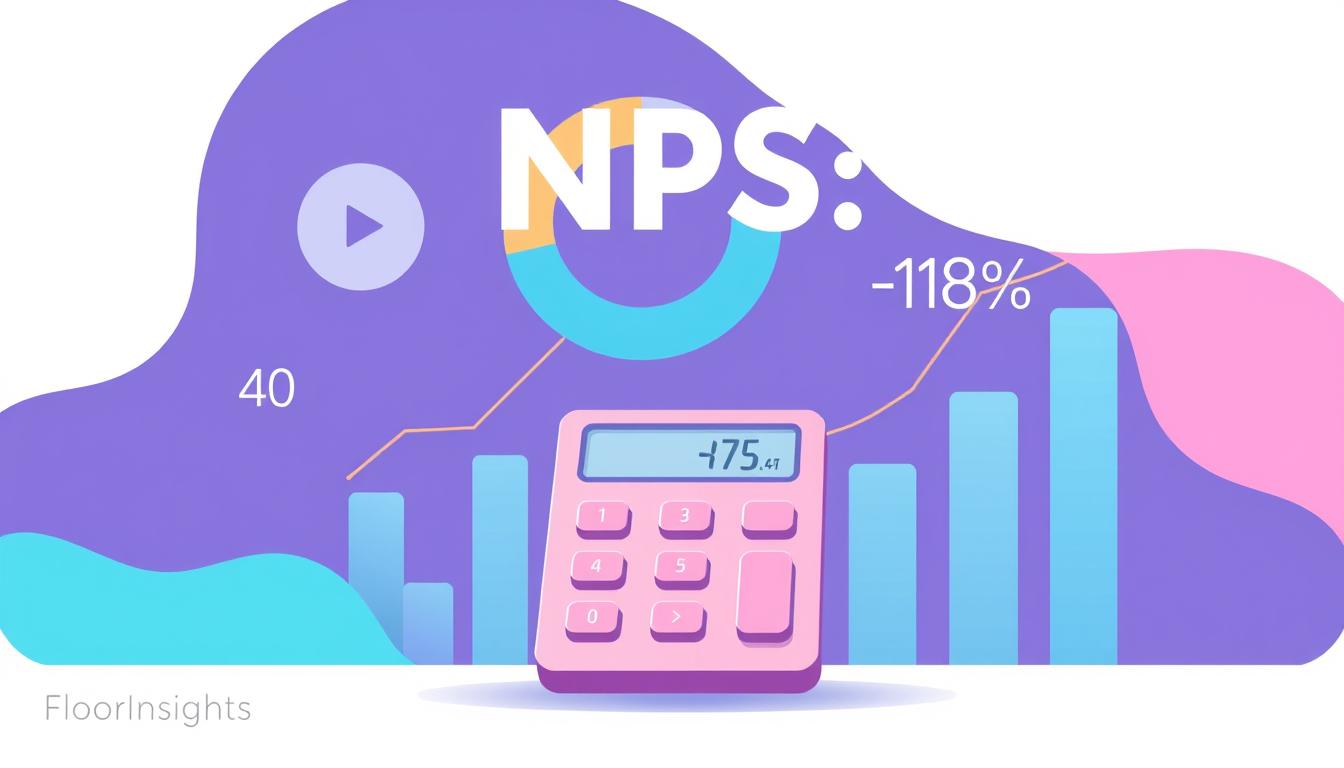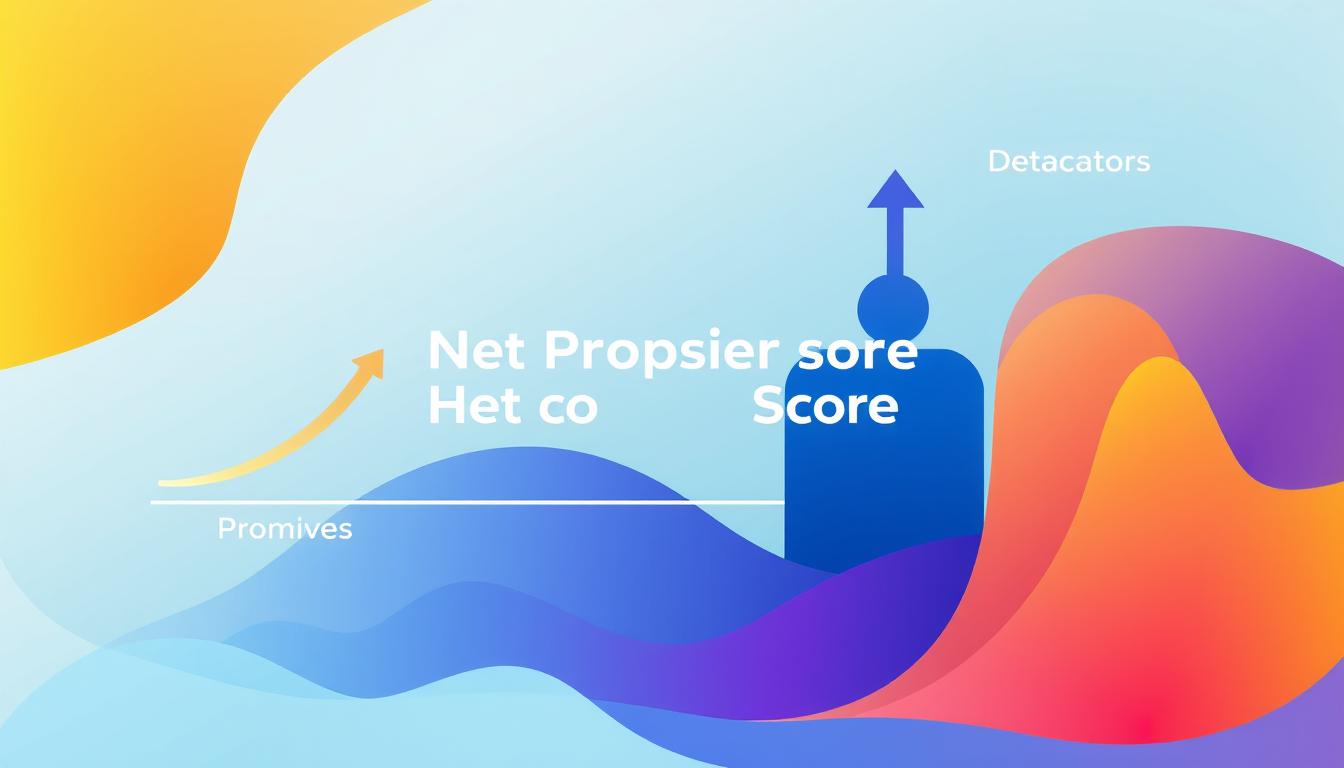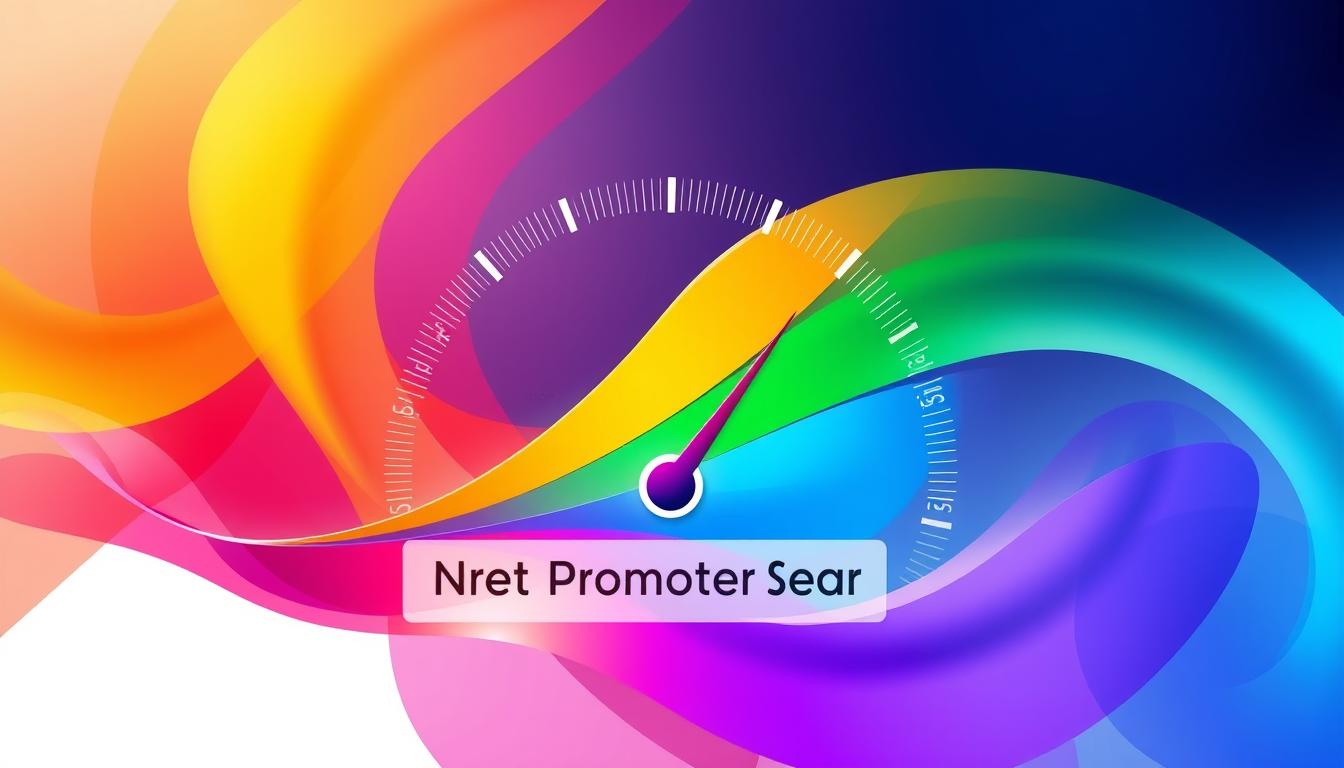Crafting an effective Net Promoter Score (NPS) survey is crucial for businesses looking to measure and improve customer loyalty. In this article, we’ll explore the key considerations and best practices for designing NPS surveys that provide accurate and actionable insights. We’ll cover everything from choosing the right survey questions to determining the optimal survey frequency, segmenting your audience, and leveraging NPS data to drive customer retention and advocacy.
Key Takeaways
- Designing an effective NPS survey is essential for measuring and improving customer loyalty.
- Understanding the Net Promoter Score concept and its importance for businesses is crucial.
- Crafting well-designed survey questions can lead to more meaningful and actionable insights.
- Choosing the right survey distribution channels can increase response rates and engagement.
- Determining the optimal survey frequency can help maintain a pulse on customer sentiment.
- Segmenting your audience can provide targeted insights for specific customer groups.
- Integrating NPS with customer experience management can drive continuous improvement.
Understanding the Net Promoter Score
As businesses strive to enhance customer loyalty and customer satisfaction, the Net Promoter Score (NPS) has emerged as a widely-adopted metric that offers valuable insights into the customer experience. But what exactly is the Net Promoter Score, and why is it so important for businesses?
What is the Net Promoter Score?
The Net Promoter Score is a customer loyalty metric that measures the likelihood of a customer to recommend a product or service to others. It is based on a single question asked to customers: “On a scale of 0 to 10, how likely are you to recommend [company/product] to a friend or colleague?”
Customers are then categorized into three groups based on their response:
- Promoters (scores 9-10): Customers who are highly satisfied and likely to refer others.
- Passives (scores 7-8): Customers who are satisfied but not enthusiastic enough to refer others.
- Detractors (scores 0-6): Customers who are dissatisfied and unlikely to refer others.
The Net Promoter Score is calculated by subtracting the percentage of Detractors from the percentage of Promoters, resulting in a score ranging from -100 to 100.
Why is NPS Important for Businesses?
The Net Promoter Score is a valuable tool for businesses because it provides a direct measure of customer loyalty and customer experience. A high NPS indicates that customers are highly satisfied and likely to recommend the product or service, which can lead to increased customer retention and revenue growth. Conversely, a low NPS signals areas for improvement in the customer experience, allowing businesses to identify and address pain points.
By tracking and analyzing their NPS over time, businesses can gain insights into the effectiveness of their customer experience initiatives, make data-driven decisions, and ultimately drive customer satisfaction and customer loyalty.
Crafting Effective NPS Survey Questions
Designing effective NPS (Net Promoter Score) survey questions is paramount for capturing accurate and reliable customer feedback. By following best practices, we can craft NPS survey questions that provide valuable insights into the customer experience and drive meaningful business decisions.
One of the key principles in creating effective NPS survey questions is to keep them concise and straightforward. Customers are more likely to respond to short, focused questions that quickly assess their likelihood to recommend your product or service. Avoid lengthy or complex questions that may overwhelm or confuse respondents.
- Use a clear and unambiguous wording: Ensure that your NPS survey questions are easy to understand and leave no room for interpretation.
- Focus on a single metric: Limit each question to a single element of the customer experience, such as overall satisfaction or likelihood to recommend.
- Provide context: Give respondents the necessary context to answer the question accurately, such as a specific product, service, or interaction.
Additionally, it’s crucial to consider the order and flow of your NPS survey questions. Start with the core NPS question, followed by optional follow-up questions that explore the reasons behind the customer’s rating. This approach allows you to gather valuable qualitative feedback to complement the quantitative NPS data.
The key to crafting effective NPS survey questions is to strike a balance between concision and depth, ensuring you capture meaningful insights that drive business decisions.
By following these best practices, you can design NPS survey questions that effectively capture customer sentiment and provide actionable insights to improve the customer experience and drive customer feedback initiatives.
Choosing the Right Survey Distribution Channel
Selecting the appropriate distribution channel for your NPS survey can significantly impact response rates and the quality of the customer feedback you collect. As businesses strive to enhance the overall customer experience, understanding the pros and cons of different survey distribution methods becomes crucial. In this section, we’ll explore the key considerations for email, in-app, and website surveys to help you determine the best approach for your organization.
Email Surveys
Email surveys remain a popular choice for collecting NPS data due to their wide reach and ease of implementation. They offer the advantage of directly reaching customers in their inboxes, making it convenient for them to provide feedback. However, the ever-increasing volume of emails can lead to survey fatigue, potentially impacting response rates. To ensure the success of email-based NPS surveys, it’s essential to craft concise and visually appealing survey invitations that capture the attention of your target audience.
In-app Surveys
For businesses with dedicated mobile applications, in-app surveys present an opportunity to gather real-time customer feedback. By seamlessly integrating the NPS survey into the user’s journey, you can gain valuable insights from customers who are actively engaged with your product or service. In-app surveys typically boast higher response rates, as they minimize interruptions and provide a convenient platform for customers to share their thoughts. However, this approach may be limited to only a portion of your customer base that utilizes your mobile application.
Website Surveys
Incorporating NPS surveys directly on your website can be an effective way to capture feedback from a broader customer base. Website surveys can be strategically placed at key touchpoints, such as after a purchase or during a customer service interaction, to ensure timely and relevant feedback. This approach allows you to gather insights from both new and existing customers, providing a well-rounded perspective on your overall customer experience. However, website surveys may face challenges in achieving high response rates, as they can be perceived as disruptive to the user’s browsing experience.
When deciding on the right distribution channel for your NPS survey, it’s essential to consider factors such as your target audience, the nature of your business, and the specific goals you aim to achieve. By carefully evaluating the strengths and limitations of each approach, you can ensure that your NPS data collection efforts align with your overall customer experience strategy and drive meaningful improvements.
| Distribution Channel | Pros | Cons |
|---|---|---|
| Email Surveys |
- Wide reach
- Ease of implementation
- Potential for survey fatigue
- Lower response rates
| In-app Surveys |
- Higher response rates
- Real-time customer feedback
- Limited to mobile app users
- Potential for disruption in user experience
| Website Surveys |
- Capture feedback from broader audience
- Opportunity to gather insights at key touchpoints
- Potential for lower response rates
- Perceived as disruptive to user experience
By carefully evaluating the strengths and limitations of each NPS survey distribution channel, businesses can make informed decisions that align with their customer experience goals and ultimately drive meaningful improvements.
Determining the Optimal Survey Frequency
Maintaining a consistent pulse on customer sentiment is crucial for driving continuous improvement and delivering exceptional customer experiences. When it comes to conducting NPS surveys, determining the optimal frequency is a critical decision that can greatly impact the quality and usefulness of the customer feedback you collect.
Several key factors should be considered when deciding on the right survey cadence for your business:
- Industry and Competitive Landscape: The optimal survey frequency can vary depending on your industry and the pace of change within your market. Fast-moving industries may require more frequent NPS surveys to stay ahead of evolving customer needs and preferences.
- Customer Lifecycle Stage: The frequency of your NPS surveys should also align with your customers’ lifecycle stages. For example, you may want to survey new customers more often to better understand their initial experience and identify any areas for improvement.
- Business Goals and Initiatives: Your survey frequency should be tailored to support your specific business objectives and ongoing initiatives. If you’re in the midst of a major product launch or customer experience transformation, more frequent NPS surveys can help you gather valuable insights to guide your efforts.
By carefully considering these factors, you can determine the optimal NPS survey frequency that ensures a steady flow of customer feedback and enables you to make data-driven decisions to enhance customer retention and drive sustainable growth.
| Industry | Recommended NPS Survey Frequency |
|---|---|
| Retail | Monthly |
| SaaS | Quarterly |
| Hospitality | Weekly |
| Telecommunications | Bi-monthly |
Segmenting Your Audience for Targeted Insights
As businesses strive to enhance their customer experience, the power of customer segmentation cannot be overstated. By dividing your customer base into distinct groups, you can tailor your NPS survey efforts and uncover a wealth of customer feedback that can drive meaningful change.
One of the key benefits of audience segmentation is the ability to identify unique customer personas. By analyzing factors such as demographics, purchasing behavior, and engagement levels, you can create targeted NPS survey campaigns that resonate with each segment. This, in turn, can lead to more accurate and actionable insights, ultimately boosting customer retention and driving overall business success.
For instance, consider segmenting your customers based on their NPS score. By separating promoters, passives, and detractors, you can gain a deeper understanding of what drives customer loyalty and address the specific concerns of each group. This granular approach can unlock a treasure trove of customer feedback that would be otherwise overlooked in a one-size-fits-all survey strategy.

Another effective segmentation strategy is to group customers according to their stage in the customer experience lifecycle. New customers, repeat buyers, and long-term advocates all have unique perspectives and needs that should be captured through tailored NPS survey questions. By adopting this approach, you can fine-tune your customer experience initiatives and ensure that your business is meeting the evolving needs of your clientele.
In the end, the key to unlocking the full potential of your NPS survey lies in your ability to segment your audience and target each group with laser-focused precision. By embracing this data-driven approach, you can transform customer feedback into a powerful catalyst for driving customer retention and fostering a culture of loyalty and advocacy.
Integrating NPS with Customer Experience Management
Integrating your NPS program with your overall customer experience management strategy is a crucial step in driving meaningful change and improving customer loyalty. By closing the feedback loop and using NPS insights to identify areas for improvement, you can create a customer-centric culture that truly listens and responds to the needs of your audience.
Closing the Feedback Loop
Collecting NPS survey data is only the first step. To truly leverage this valuable feedback, it’s essential to close the loop by communicating with your customers and demonstrating that their voice is heard. This can involve:
- Promptly responding to survey respondents, addressing their concerns, and thanking them for their input.
- Sharing NPS insights and action plans with your entire organization, ensuring that everyone is aware of customer sentiment and committed to driving improvements.
- Regularly updating customers on the changes and enhancements you’ve implemented based on their feedback.
Identifying Improvement Opportunities
NPS data provides a goldmine of insights that can help you pinpoint areas for improvement within your customer experience. By analyzing NPS scores, trends, and qualitative feedback, you can:
- Uncover pain points and frustrations that are impacting customer loyalty.
- Identify process inefficiencies or product/service gaps that need to be addressed.
- Recognize opportunities to enhance your customer interactions, communication, and overall experience.
Armed with these insights, you can develop targeted strategies and action plans to address the root causes of customer dissatisfaction and drive lasting improvements.
| Key Metric | Importance | Action Step |
|---|---|---|
| NPS Score | Measures overall customer loyalty and advocacy | Identify trends and set targets for improvement |
| Detractor Feedback | Uncovers pain points and areas for improvement | Analyze feedback and develop solutions |
| Promoter Engagement | Leverages your brand advocates to drive referrals and retention | Nurture and empower your promoters |
By integrating NPS into your customer experience management strategy, you can create a customer-centric culture that consistently delivers exceptional experiences and fosters long-term loyalty.
Analyzing and Interpreting NPS Survey Data
Effective analysis and interpretation of your NPS survey data is the key to unlocking the full potential of this powerful metric. By delving into the data, businesses can uncover valuable insights that drive customer loyalty and retention.
Calculating the Net Promoter Score
The first step in analyzing your NPS survey data is to calculate the Net Promoter Score. This straightforward calculation involves subtracting the percentage of detractors from the percentage of promoters, providing a clear and concise metric to measure customer loyalty. Regular tracking of your NPS can help identify trends and patterns that guide your customer experience strategy.
Identifying Trends and Patterns
Once you have your NPS score, it’s time to dive deeper into the data. Look for trends and patterns that emerge over time, such as changes in the proportion of promoters, passives, and detractors. This customer data analysis can shed light on the factors influencing your customers’ perceptions and their likelihood to recommend your brand.
Consider segmenting your data based on customer demographics, purchasing behavior, or other relevant criteria to uncover more granular insights. By identifying the drivers of both positive and negative feedback, you can develop targeted strategies to address the needs of your customer base and foster greater customer loyalty.
The true value of the NPS survey lies in its ability to provide actionable insights that guide your customer experience initiatives.
Regularly analyzing and interpreting your NPS survey data is a critical step in harnessing the power of this customer feedback metric. By understanding the nuances of your NPS survey results, you can make informed decisions to enhance your customer relationships and drive long-term business growth.
Leveraging NPS Insights for Customer Retention
Harnessing the power of Net Promoter Score (NPS) survey insights can be a game-changer when it comes to boosting customer loyalty and retention. By delving deep into the data, we can uncover valuable patterns and trends that shed light on what truly matters to your customers.
One of the key ways to leverage NPS insights for customer retention is by enhancing the overall customer experience. By identifying areas of improvement based on customer feedback, you can make targeted changes to address pain points and enhance the touchpoints that matter most to your audience.
For instance, if your NPS survey reveals that customers are consistently frustrated with the lengthy onboarding process, you can streamline the onboarding experience, making it more seamless and efficient. This not only improves customer satisfaction but also fosters long-term loyalty, as customers feel valued and appreciated.
Moreover, NPS data can help you identify your most valuable customers – your brand promoters. By engaging with these loyal advocates, you can cultivate deeper relationships, encouraging them to share their positive experiences and become ambassadors for your brand. This, in turn, can lead to increased referrals and a steady stream of new customers.
Conversely, NPS insights can also shed light on your detractors – those customers who are less than enthusiastic about your offerings. By addressing their concerns proactively, you can turn these detractors into loyal supporters, ultimately improving your customer retention rates.
Leveraging NPS insights is not just about improving the customer experience; it’s about fostering a deep, lasting connection with your most valuable customers.
By aligning your customer retention strategies with the insights gleaned from your NPS surveys, you can create a virtuous cycle of customer loyalty and growth. This holistic approach to NPS survey data not only benefits your bottom line but also strengthens your brand’s reputation and position in the market.
Building a Culture of Customer Advocacy
Cultivating a culture of customer advocacy is essential for driving sustainable business growth. By engaging with your brand promoters and addressing the concerns of detractors, you can turn them into loyal advocates for your brand, amplifying your reach and boosting customer loyalty.
Engaging with Brand Promoters
Brand promoters, those customers who enthusiastically recommend your products or services, are your most valuable assets. Actively engaging with them can foster a deeper connection and encourage them to continue spreading positive word-of-mouth about your business. Consider the following strategies:
- Recognize and reward your brand promoters with exclusive offers, personalized communication, or VIP experiences.
- Invite them to participate in product development or feedback sessions, making them feel like valued partners in your business.
- Leverage their testimonials and success stories in your marketing campaigns to inspire others to become brand advocates.
Addressing Detractors’ Concerns
While it’s natural to focus on your brand promoters, it’s equally important to address the concerns of your detractors – those customers who are critical of your brand. By proactively engaging with them and resolving their issues, you can turn them into loyal customers and even brand advocates. Consider the following strategies:
- Respond promptly to detractors‘ feedback, acknowledging their concerns and demonstrating your willingness to improve.
- Investigate the root causes of their dissatisfaction and implement solutions to address the underlying issues.
- Follow up with detractors to ensure their concerns have been resolved and gather feedback on their experience with your brand.
By building a culture of customer advocacy, you can foster a loyal customer base, amplify your brand’s reach, and drive sustainable business growth.
| Customer Type | Characteristics | Recommended Strategies |
|---|---|---|
| Brand Promoters | Enthusiastic customers who actively recommend your products or services |
- Recognize and reward them
- Involve them in product development or feedback sessions
- Leverage their testimonials in marketing campaigns
| Detractors | Customers who are critical of your brand and may discourage others from using your products or services |
- Respond promptly to their feedback
- Investigate and address the root causes of their dissatisfaction
- Follow up to ensure their concerns have been resolved
“Engaged and loyal customers are the lifeblood of any successful business. By nurturing a culture of customer advocacy, you can unlock the full potential of your brand and drive sustainable growth.”
Best Practices for Successful Net Promoter Score Surveys
To ensure the success of your NPS survey program, it’s essential to follow best practices and continuously refine your approach. By implementing these strategies, you can design and execute NPS surveys that provide valuable customer feedback, enhance customer experience, foster customer loyalty, and drive customer retention.
Here are the key considerations to keep in mind for successful NPS survey implementation:
- Craft clear and concise NPS survey questions that capture the essence of customer sentiment.
- Choose the right survey distribution channels, such as email, in-app, or website, to reach your target audience effectively.
- Determine the optimal survey frequency based on factors like customer touchpoints and the pace of your business.
- Segment your audience to uncover targeted insights and tailor your NPS survey approach accordingly.
- Integrate NPS with your overall customer experience management strategy, closing the feedback loop and driving continuous improvement.
- Analyze NPS survey data to identify trends and patterns, and leverage these insights to enhance customer loyalty and customer retention.
- Foster a culture of customer advocacy by engaging with brand promoters and addressing the concerns of detractors.
By consistently applying these best practices, you can optimize your NPS survey program and unlock the full potential of customer feedback to drive meaningful business impacts.
“The voice of the customer is the most powerful force in business.”
Conclusion
In the ever-evolving landscape of customer experience, the Net Promoter Score (NPS) has emerged as a powerful metric that enables businesses to better understand and cultivate loyalty among their valued customers. By crafting effective NPS surveys, we can gain invaluable insights into customer preferences, pain points, and their propensity to recommend our products or services.
As we’ve explored throughout this article, the key to successful NPS implementation lies in a holistic approach that considers factors such as survey design, distribution channels, frequency, audience segmentation, and data analysis. By integrating NPS with a robust customer experience management strategy, we can close the feedback loop, identify areas for improvement, and foster a culture of customer advocacy that drives long-term growth and retention.
Ultimately, the true power of the Net Promoter Score lies in its ability to transform customer feedback into actionable insights that drive business success. By embracing the best practices and strategies outlined in this article, we can unlock the full potential of NPS and create a customer-centric organization that consistently exceeds expectations and builds lasting loyalty with our valued customers.
FAQ
What is the Net Promoter Score?
The Net Promoter Score (NPS) is a widely-used metric that measures customer loyalty and the likelihood of customers to recommend a product or service to others. It is calculated based on the responses to a single question: “How likely are you to recommend [company/product/service] to a friend or colleague?”
Why is NPS important for businesses?
NPS is important for businesses because it provides a clear and actionable metric for understanding customer loyalty and the potential for word-of-mouth referrals. By tracking NPS over time, businesses can identify areas for improvement, measure the impact of customer experience initiatives, and focus on cultivating a base of loyal, advocating customers.
How can I design effective NPS survey questions?
To design effective NPS survey questions, it’s important to keep the wording simple and focused, avoid leading or biased language, and ensure the questions accurately capture customer sentiment and the likelihood of recommendation. Best practices also include using a 0-10 rating scale and including follow-up questions to understand the reasons behind the scores.
What are the best channels for distributing NPS surveys?
The most common channels for distributing NPS surveys include email, in-app surveys, and website surveys. Each channel has its own advantages and considerations, such as email surveys’ ability to reach a wider audience, in-app surveys’ integration with the customer experience, and website surveys’ potential for higher response rates. The optimal channel for your business will depend on your specific customer base and goals.
How often should I conduct NPS surveys?
The optimal frequency for conducting NPS surveys depends on various factors, such as your industry, customer lifecycle stage, and business goals. Factors to consider include maintaining an ongoing pulse on customer sentiment, gathering feedback at key touchpoints, and balancing survey fatigue with the need for continuous improvement. Many businesses conduct NPS surveys quarterly or annually, with additional targeted surveys as needed.
How can I segment my audience for more targeted NPS insights?
Segmenting your audience for NPS surveys can provide more granular and actionable insights. Some effective segmentation strategies include grouping customers by demographics, purchase history, interaction touchpoints, and product/service usage. This allows you to identify unique customer perspectives, pain points, and opportunities for improvement within specific segments of your customer base.
How do I integrate NPS with my overall customer experience management strategy?
Integrating NPS with your customer experience management strategy is crucial for driving meaningful change and improving customer loyalty. This includes closing the feedback loop by responding to customer feedback, using NPS insights to identify and address areas for improvement, and aligning your NPS program with other customer experience initiatives to create a cohesive and customer-centric approach.
How do I analyze and interpret NPS survey data?
Effective analysis and interpretation of NPS survey data involves calculating the Net Promoter Score, which is the percentage of Promoters (those who score 9-10) minus the percentage of Detractors (those who score 0-6). Additionally, it’s important to identify trends and patterns in the data, such as changes in scores over time, differences between customer segments, and the reasons behind specific scores provided by customers.
How can I use NPS insights to improve customer retention?
By leveraging the insights gained from your NPS surveys, you can develop targeted strategies to enhance the customer experience, address pain points, and foster long-term relationships with your most valuable customers. This may include prioritizing initiatives to improve the areas that drive the highest customer loyalty, tailoring your communication and support to meet the specific needs of different customer segments, and proactively addressing the concerns of detractors to turn them into promoters.
How do I build a culture of customer advocacy around NPS?
Building a culture of customer advocacy involves actively engaging with your brand promoters, acknowledging their loyalty and positive sentiment, and empowering them to become advocates for your brand. It also includes addressing the concerns of detractors in a timely and empathetic manner, demonstrating your commitment to improving the customer experience. By fostering a culture of customer advocacy, you can turn your most loyal customers into a powerful force for driving sustainable business growth.
What are the best practices for successful Net Promoter Score surveys?
Best practices for successful NPS surveys include aligning the survey design with your specific business goals, ensuring the wording and format of the questions are clear and unbiased, selecting the appropriate distribution channels to reach your target audience, determining the optimal survey frequency, segmenting your customer base for more targeted insights, integrating NPS with your overall customer experience management strategy, and effectively analyzing and interpreting the survey data to drive continuous improvement.






